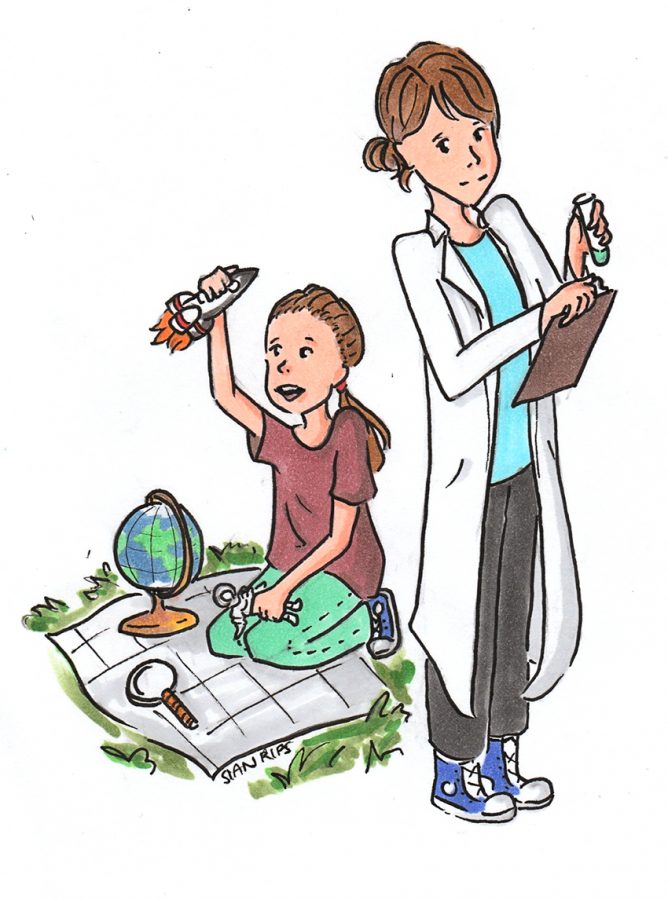According to molecular biosciences professor Shelley Payne, when we limit who enters STEM, we are a limiting the talent pool.
Payne recently published an op-ed about the STEM gap, or the discrepancy between men and women, as well as people of color, in STEM fields. Payne said that while both genders are curious about the world when they are young, this interest deteriorates in girls as they get older, due to societal and cultural pressures.
According to a 2016 report from the National Science Foundation, boys and girls perform equally well on standardized tests in elementary school. However, this is not the case for minorities from low income families, where boys perform better than girls starting at an early age. Larger gaps form in high school as boys are more likely to take AP classes such as calculus or physics, according to the report. Boys were also more likely to take engineering and computer science courses in high school.
Gina Higby, the outreach and STEM education senior program coordinator for UT’s Women in Engineering Program, said that many of the issues arise in late elementary and early middle school curricula. She added that many STEM challenges and activities children face in school are competition-based, which creates a problem.
“When it’s a competition, someone loses, and since boys are typically given more opportunity, they are typically going to be the ones who win because they have experience,” Higby said. “With more instances of girls losing at science, they feel as if they’re not capable. Team-based challenges solve this problem.”
On Feb. 28, UT hosted its annual “Introduce a Girl to Engineering Day.” There were over 8,000 registered kindergarten through 8th grade participants. Both Higby and Payne said that the most important aspect of events such as Girl Day is creating female role models in STEM.
“When I was growing up, physicians were male and nurses were female,” Payne said. “None of my female friends considered becoming a doctor; if they were interested in medicine they went to nursing school or became a medical technician … (Girls) need role models, so they think of women in science as the norm, not the exception.”
The disparities between males and females in STEM begin to emerge in higher education. While women earn 57 percent of bachelor’s degrees at institutions of higher education, they earn only 43 percent of mathematics degrees, 20 percent of engineering degrees and 17 percent of computer science degrees, according to the report by the National Science Foundation.
“The effects of bias and climate are cumulative and for some students, experiences in college classrooms may be the tipping point,” Payne said.
Chelsea Drake, a leadership collaborative program coordinator who oversees freshmen for the Women in Engineering Program, said that the key to keeping women engaged in engineering is to create community.
“Making sure that when a first-year woman comes in and is in a huge class with a limited number of other women in engineering, that they can find those women (is the most important thing),” Drake said. “Having that support system will help them persist and stay in engineering.”
According to Payne, there is no easy solution; women and minorities will have to push their way past the historical and cultural ideas that they aren’t as capable. However, she said society can’t spend decades waiting for it to happen.
“We need to do everything we can to eliminate barriers to the full participation of women and underrepresented minorities in STEM education and STEM careers,” Payne said. “Encourage them, nurture their curiosity, recognize that they are smart and capable and treat them with the same respect afforded males who express an interest in science.”
















